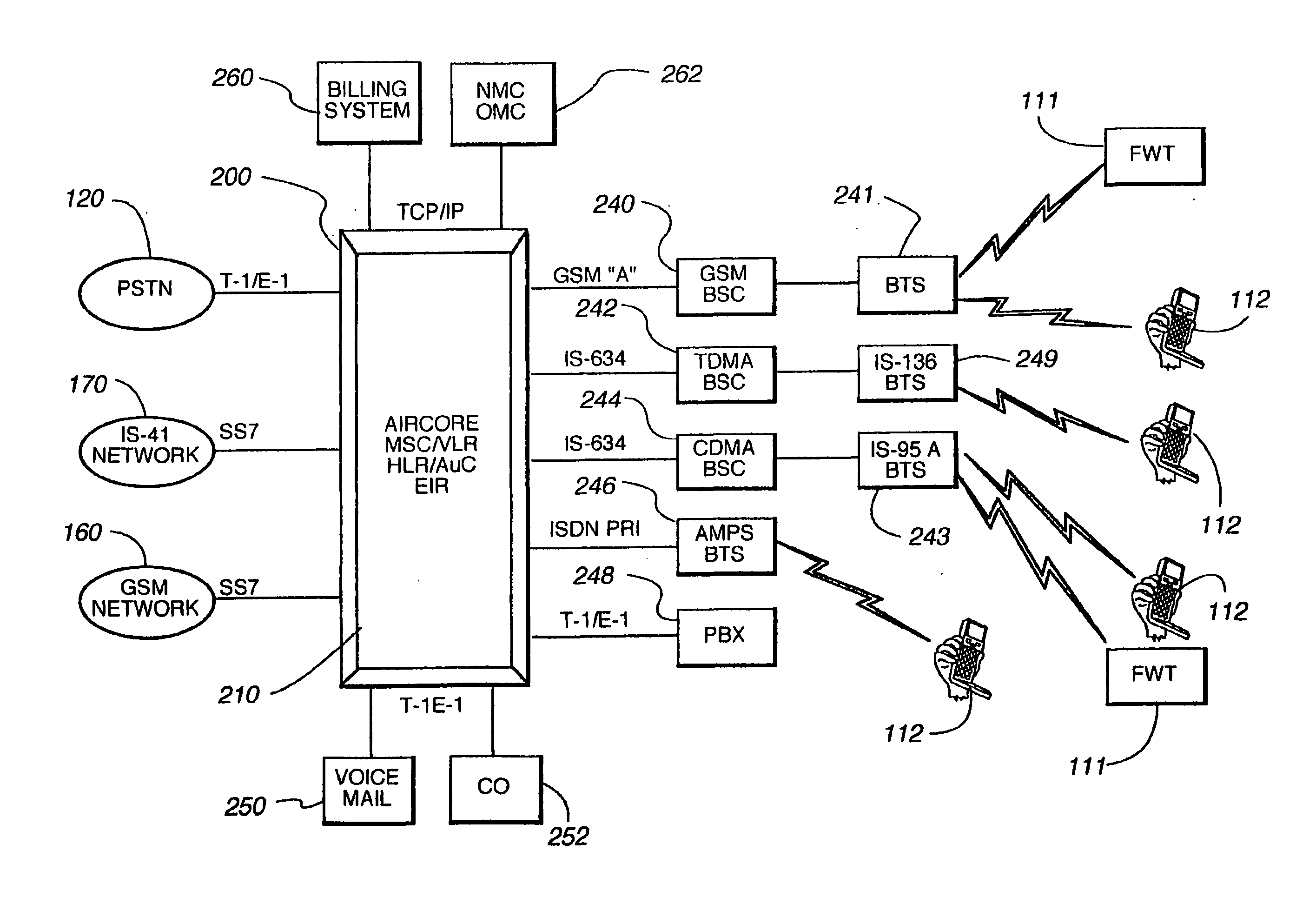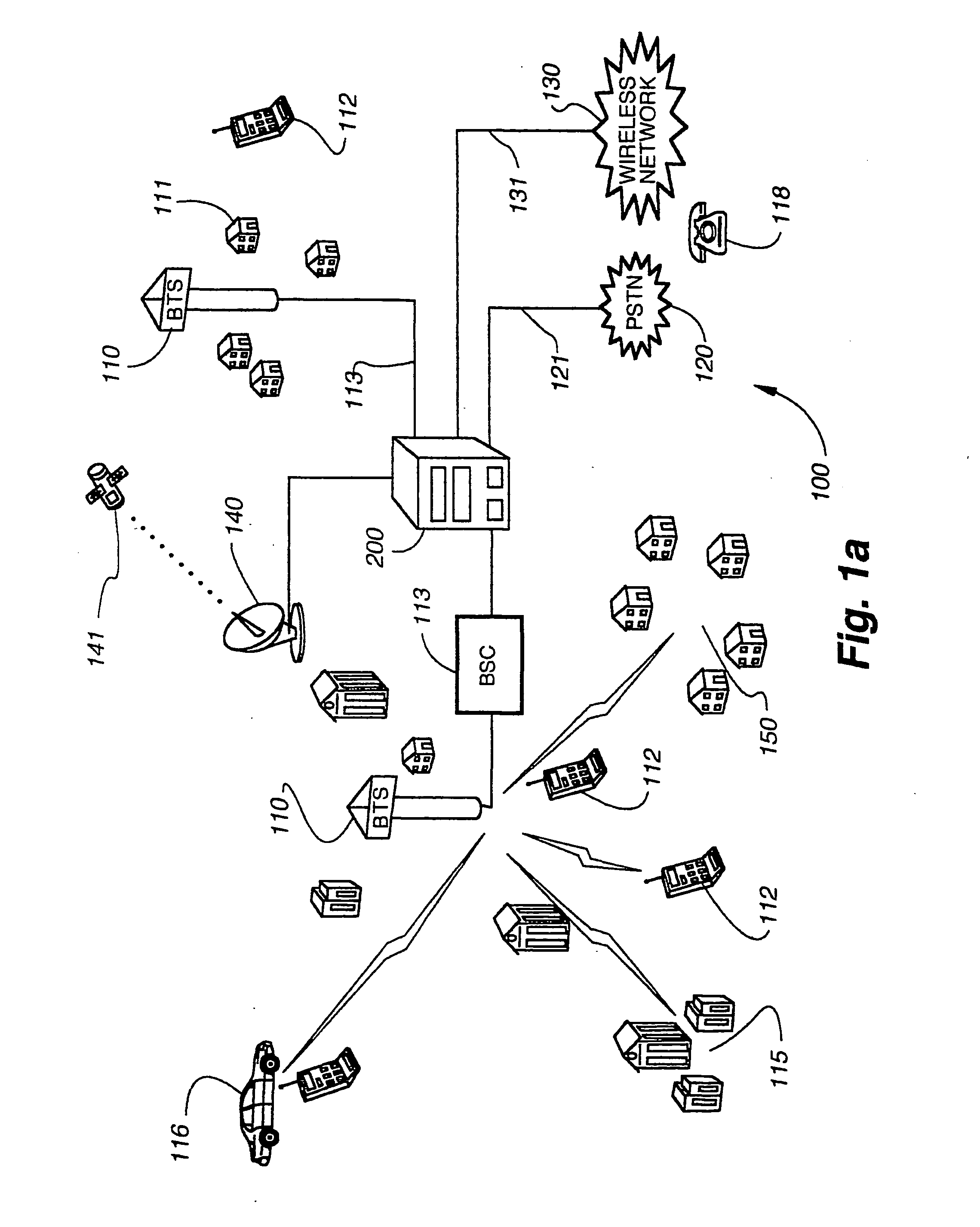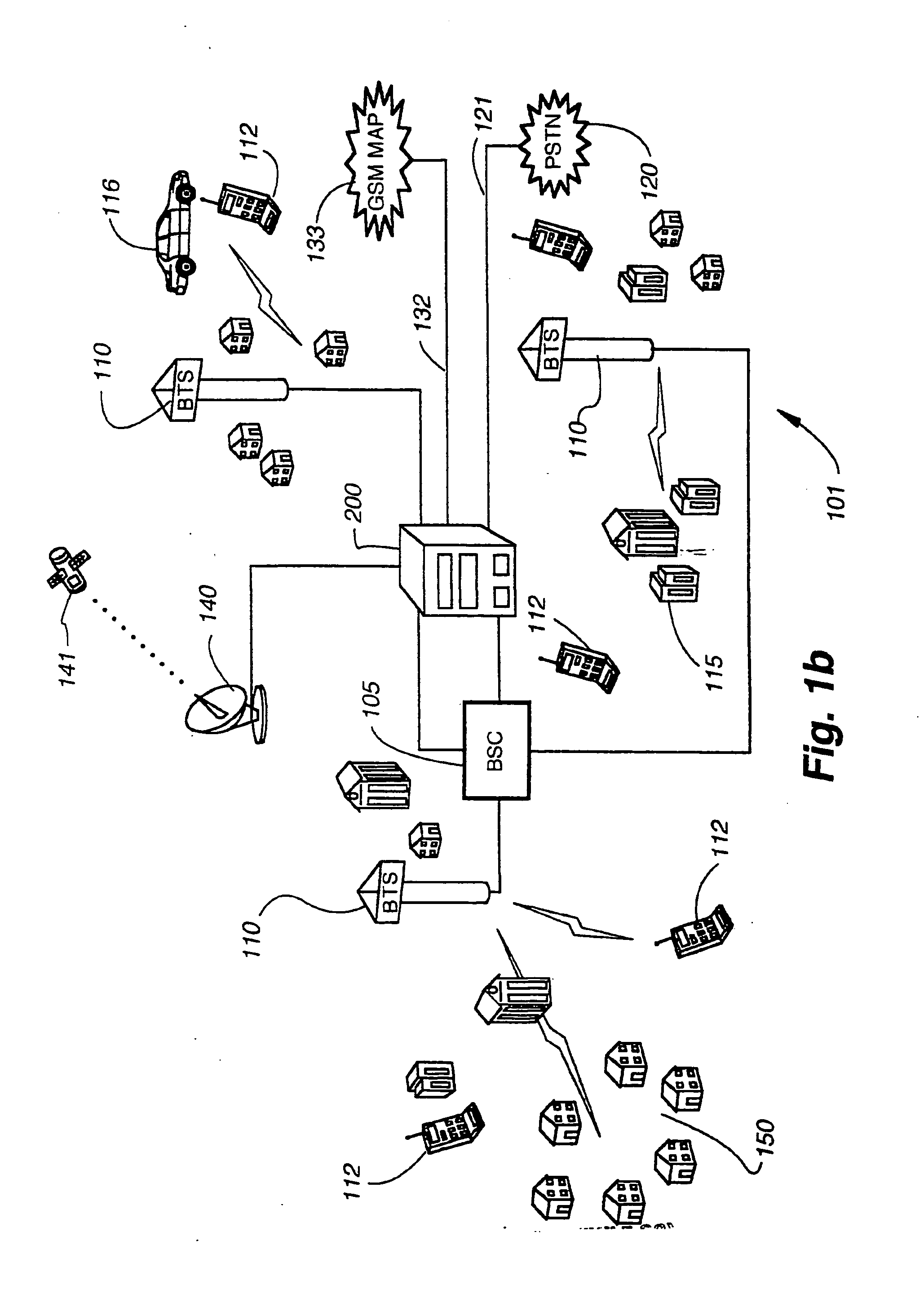Multi-protocol wireless communication apparatus and method
a wireless communication and multi-protocol technology, applied in electrical equipment, substation equipment, radio transmission, etc., can solve the problems of not being suitable for small markets and wireless providers, not simply upgrading analog base stations to digital, and high switching system costs, so as to achieve the effect of convenient updating
- Summary
- Abstract
- Description
- Claims
- Application Information
AI Technical Summary
Benefits of technology
Problems solved by technology
Method used
Image
Examples
Embodiment Construction
[0068] Mobile telecommunications (radio) systems that permit customer calling from mobile stations such as automobiles, or small light weight hand held personal communications units are becoming increasingly prevalent. These systems use the principles of cellular technology to allow the same frequencies of a common allocating radio bandwidth to be reused in separated local areas or cells of a broader region. Each cell is served by a base transceiver station comprising a group of local transceivers connected to a common antenna. Base station systems, each including a controller and one or more transceiver stations, are interconnected via a switching system, called a mobile switching center (MSC), which is also connected to the public switched telephone network (PSTN), and the Public Land Mobile Telephone Network (PLMN). These mobile telecommunications systems are now entering a second generation characterized by digital radio communications with a different set of standards, such as ...
PUM
 Login to View More
Login to View More Abstract
Description
Claims
Application Information
 Login to View More
Login to View More - R&D
- Intellectual Property
- Life Sciences
- Materials
- Tech Scout
- Unparalleled Data Quality
- Higher Quality Content
- 60% Fewer Hallucinations
Browse by: Latest US Patents, China's latest patents, Technical Efficacy Thesaurus, Application Domain, Technology Topic, Popular Technical Reports.
© 2025 PatSnap. All rights reserved.Legal|Privacy policy|Modern Slavery Act Transparency Statement|Sitemap|About US| Contact US: help@patsnap.com



